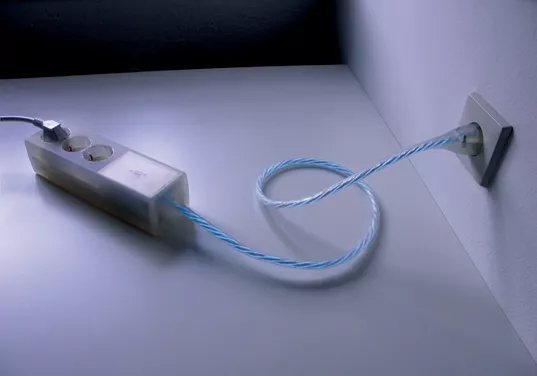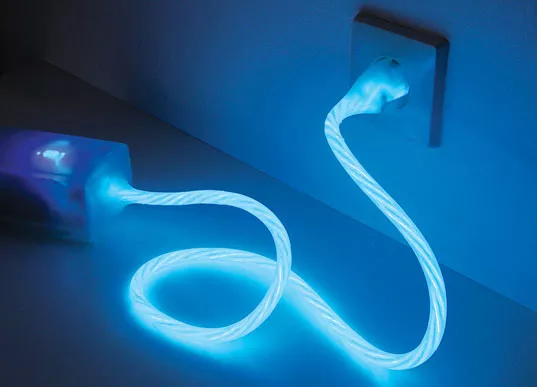Power cord that reveals the consumption of electric power
Efficient energy consumption is the demand of sustainable environment. Keeping in view the energy and sustainability, designer Anton Gustafsson and Magnus Gyllensward has come up with innovative approach to visualize electric power. The Power cord designed by the team, envisions you about the power consumed by you.
When the energy is consumed by the appliances, the cord is lighted up to keep you aware about the energy consumption. The more you use the power grid, the brighter the light in the cord. The power cord keeps a check on the power consumed, thus reflecting the energy consumption of electrical devices in their home.


In the update of 2022, this power cord was not available any more.


